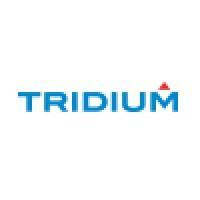
ARM mbed
ARM mbed IoT platform provides a sustained environment and tools for businesses to create and deploy professional IoT solutions and applications. It features required cloud services, operating systems, software, ecosystem, and developer tools for easy, faster and cost-effective creation and management of connected applications. ARM mbed is suitable for all kinds of businesses from all major industries and all sizes.
Top ARM mbed Alternatives
Telit IoT
Telit IoT portal makes it easy for businesses and individuals to seamlessly connect their devices, assets, remote sensors, and services to their websites and apps in the cloud.
WSO2 IOT
WSO2 IOT (Internet Of Things) is an open platform for devices and machines that are part of the IoT.
Niagra Framework
The Niagara Framework® serves as a pivotal software infrastructure designed for seamless integration of device-to-enterprise applications.
Axeda
Axeda is a cloud-based software service used to manage connected devices, products and machines, and for the implementation of Internet of Things (IoT) Applications.
WebThings
WebThings offers an open platform for seamless monitoring and control of smart home devices through a unified web interface.
Cisco IOx
Cisco IOx integrates Cisco IOS and Linux OS, enabling secure, efficient execution of IoT applications at the edge.
Ayla Networks
It enables businesses and marketers to easily and more securely build and deploy connected products...
AWS IoT ExpressLink
By offloading networking and cryptography tasks, it reduces development costs and supports minimal redesign efforts...
WebNMS IoT
It offers solutions and tools for enterprises to develop and deploy IoT devices faster by...
scriptr.io
It simplifies the ingestion of IoT data, applying filtering, transformation, and custom business rules, while...
Exosite
It provides several tools and integrations, including visual analytics, remote monitoring, and more for effective...
BalenaCloud
Developers can easily start using their preferred language, like Node.js or Python...
Leverege
By leveraging AI-driven insights, it optimizes service centers, reduces wait times, and boosts productivity while...
OpenBalena
It allows users to remotely update software, monitor device status, and manage applications via the...
flespi
It aggregates normalized data from diverse sources, facilitates over-the-air device management, and enriches real-time analytics...
ARM mbed Review and Overview
MBED is an embedded device cum an operating system that is capable of connecting various Internet of Things (IoT) devices. This is done in partnership with ARM and MBED that are the technological leaders in embedded component manufacturers, system integrators and cloud service providers.
ARM-Mbed is a 32-bit ARM Cortex-M microcontroller that provides a common hardware platform for the IoT devices. These IoT devices can be intelligently integrated with cloud applications and services across various market segments. A Mbed-IoT device can be built with open standards, and be capable of having unified Internet protocols, security and standard-manageable solution for various energy and commercial devices.
Mbed offers a free online IDE for developers to write the code and compile it on the cloud using the ARMCC C/C++ compiler. It also provides an operating system that can be made compatible with all the IoT devices.
The devices, along with its components, can be connected to the Mbed microcontroller board and made operational for the design of various wireless sensors for smart agriculture, smart healthcare, etc.
Mbed is an IoT or “Internet of Things” device development platform. With this, the development of hardware components of a hardware device becomes very simple. Through C++ programming and tools like in-built browser, an extensive SSL code library, common component drivers and a built-in security stack Mbed has everything covered. A large helping community of 400,000 developers and over 150 development boards are available for understanding and making an IoT device.
Device development support
ARM provides a huge range of operating systems, tools and support needed to develop any IoT product efficiently, securely and rapidly. It includes all the libraries to help us write the application code. The Linux-OS is a new and open-source embedded OS to help developers add a new dimension to their product. The online IDE needs no set-up to get started with.
The various upgrades of Mbed OS from 2.0 to 5.0 can be used for any older projects without the need to change any application code. It offers a huge range of connectivity options like Bluetooth, Wi-Fi, NFC, Thread, Ethernet, RFID, and Cellular. The Mbed online community has a forum that allows all developers to contribute and collaborate towards research and for any technical support.
Mbed-built devices
Some of the devices built using Mbed are remote I/O adapter, solar charge controller, air quality sensors, smart street lighting, smart door locks, automotive dashboards, concrete strength monitor, beehive monitoring system, soil moisture sensor, wireless temperature, waste management system and humidity sensor, etc.
Almost every device in the industrial sector, healthcare, defense, and business can be deployed with this microcontroller for smart performance and automation.
Various Device Development options provided by Mbed are the following:
- The Mbed OS: Mbed provides an Operating System with an easy API. It can be used with basic programming skills. Arm is an Operating system that is provided for free by Mbed and has all features like necessary libraries, multilayer security and a wide range of connectivity needed to develop a connected device.
- The Mbed Linux OS: It is a Linux based Arm operating system provided for free. One can choose the development OS as they please.
Mbed HDK (Hardware Development Kit)
The HDK consists of the following:
- Boards: These Mbed boards can be used for quick prototyping of a device. These boards can be integrated with various components like microcontrollers or modules on which the Mbed OS can run.
- Components: Components can be used to extend the capacity of the modules, boards and microcontrollers based on the prototype. This also includes all software libraries for the Mbed OS.
- Interfaces: These run on the Arm-based microcontrollers. The circuits and firmware hardware can be used for testing and debugging the software.
- Modules: Modules are the “pre-integrated” certified platform. These include front-end, microcontroller, connectivity software and other services that can be bundled together to create a prototype circuit.
Mbed is a leading and fast-growing global team that has extensive experience in building and developing silicon technology, firmware, tools and web services. It has been used around the globe to make smart devices such as the Soil moisture sensor, the PlacePod Parking sensor, Anybus wireless Bolt, etc.
Top ARM mbed Features
- Open source IoT operating system
- Comprehensive SSL/TLS solution
- Built-in security stack
- Multiple connectivity options
- Extensive component library
- Browser-based development environment
- Integrated debugging tools
- Command line interface support
- Mbed Enabled hardware support
- Development boards for prototypes
- Mass production-ready modules
- Pre-built code examples
- User-friendly API for C++
- Extensive documentation and support
- Scalable for various applications
- Zero-installation IDE
- Supports various microcontrollers
- Flexible integration options
- Reference designs available
- Community-driven development resources














